Preceded by office created Name Istvan Szechenyi Succeeded by Laszlo Csany Role Politician | Profession Politician Children Bela Szechenyi Religion Roman Catholic | |
 | ||
Died April 8, 1860, Dobling, Austria Spouse Crescence Seilern (m. 1836–1860) Parents Juliana Festetics, Ferenc Szechenyi Siblings Franciska, Pal Szechenyi, Lajos Szechenyi, Zsofia Similar People Lajos Kossuth, Ferenc Szechenyi, Lajos Batthyany, Sandor Petofi, Ferenc Deak | ||
Count István Széchenyi de Sárvár-Felsővidék ([ˈiʃtvaːn ˈseːtʃeːɲi]; 21 September 1791 – 8 April 1860) was a Hungarian politician, theorist and writer, one of the greatest statesmen of Hungarian history, honored with the epithet "the Greatest Hungarian".
Contents
- Family and early life
- Political career
- The great reformer
- Marriage and family
- Political rivalry with Kossuth
- Long debate of reformers in the press 1841 1848
- Retreat from politics
- Death
- Writings
- Legacy and honors
- References
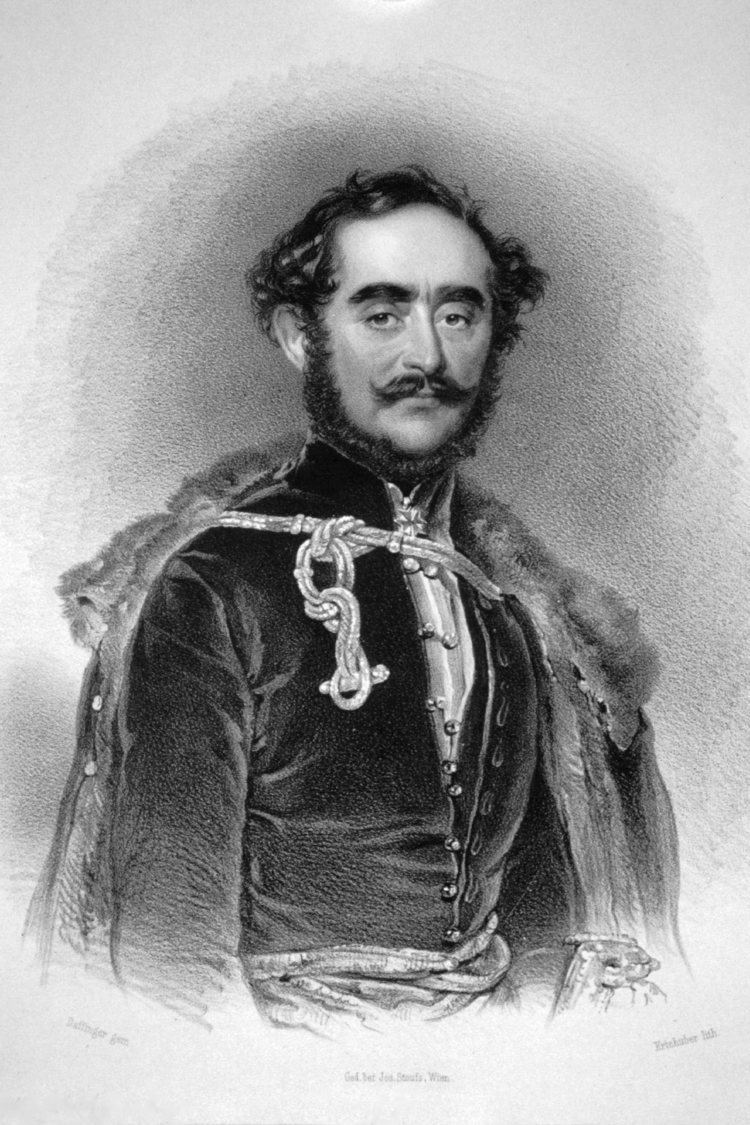
Family and early life
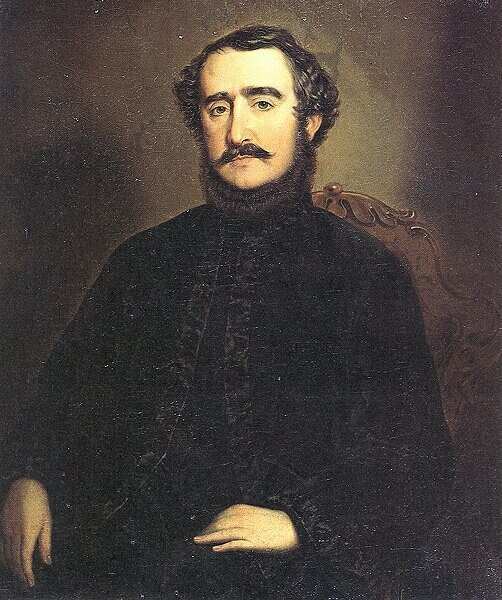
Széchenyi was born in Vienna to Count Ferenc Széchényi and Countess Juliána Festetics de Tolna; he was the youngest of their two daughters and three sons. The Széchenyis were an old and influential noble family of Hungary. Traditionally loyal to the House of Habsburg, they were linked with noble families, such as the Liechtenstein, the House of Esterházy and the House of Lobkowicz. István Széchenyi's father was an enlightened aristocrat who founded the Hungarian National Museum. The boy spent his childhood both in Vienna and on the family estate of Nagycenk, Hungary. After his private education, the young Széchenyi joined the Austrian army and participated in the Napoleonic Wars. He was seventeen years old when he entered the army. He fought with distinction at the battle of Raab (14 June 1809) and on 19 July brought about the subsequent junction of the two Austrian armies by conveying a message across the Danube to General Chasteler at the risk of his life. Equally memorable was his famous ride, through the enemy's lines on the night of 16–17 October 1813, to convey to Blücher and Bernadotte the wishes of the two emperors that they should participate in the battle of Leipzig on the following day, at a given time and place. In May 1815 he was transferred to Italy, and at the battle of Tolentino scattered Murat's bodyguard by a dashing cavalry charge.
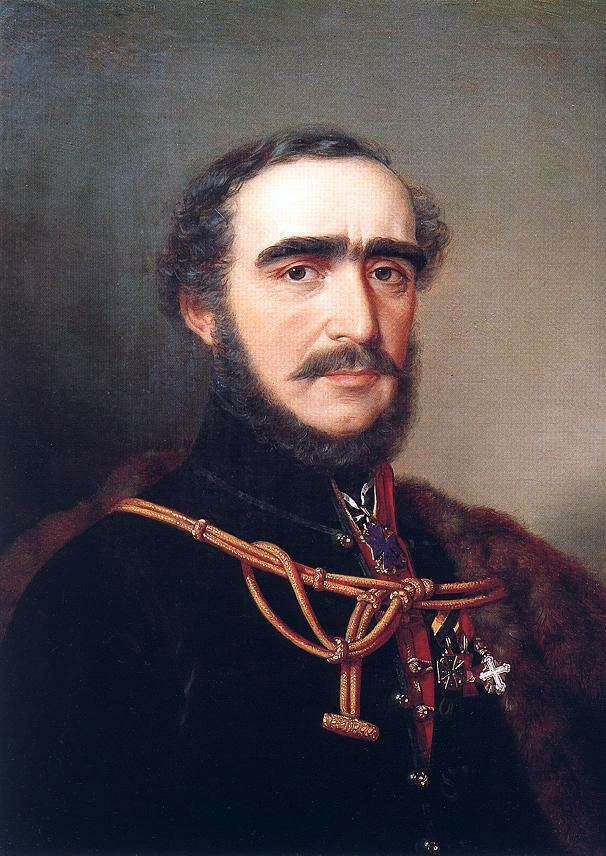
He left the service as a first lieutenant in 1826, and turned his interest towards politics.
Political career
From September 1815 to 1821, Széchenyi traveled extensively in Europe, visiting France, England, Italy, Greece and the Levant, and studying their institutions. He also established important personal connections. The rapid modernisation of Britain fascinated him the most, and strongly influenced his thinking. He was also impressed with the Canal du Midi in France, and began to envision ways to improve navigation on the lower Danube and Tisza.
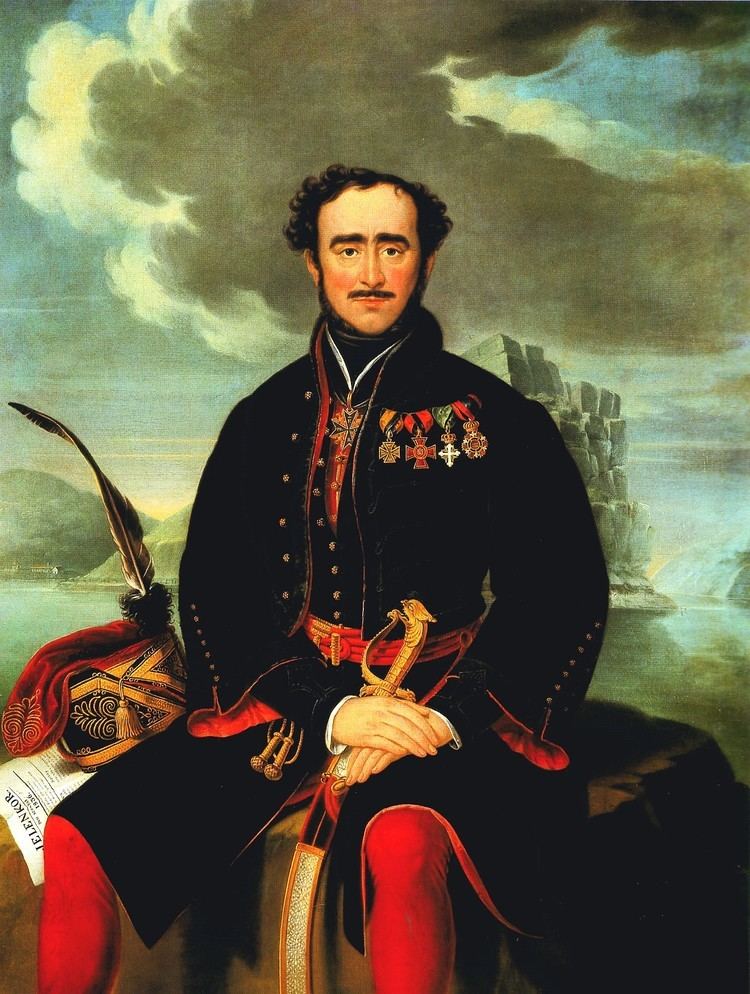
The Count quickly became aware of the growing gap between the modern world and his native Hungary. For the rest of his life, he was a determined reformer and promoted development. Széchenyi found early political support from his friend, Baron Miklós Wesselényi, a noble from Transylvania; however, their relation later weakened.
The great reformer
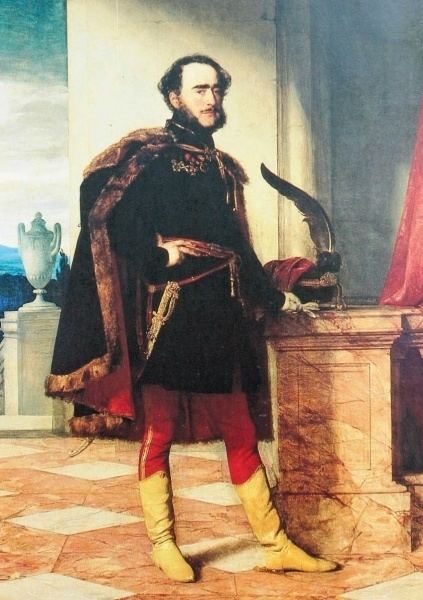
Széchenyi gained a wider reputation in 1825, by supporting the proposal of the prime minister, Pál Nagy, to establish the Hungarian Academy of Sciences; Széchenyi donated the full annual income of his estates that year, 60,000 florins, towards it. His example brought donations of 58,000 florins from three other wealthy nobles, and they gained Royal approval for the Academy. He wanted to promote the use of the Hungarian language in this effort. This was an important milestone in his life and for the reform movement.

In 1827, he organized the Nemzeti Kaszinó, or National Casino, a forum for the patriotic Hungarian nobility. The Casino had an important role in the reform movement by providing an institute for political dialogues.
To reach a wider public, Széchenyi decided to publish his ideas. His series of political writings, the Hitel (Credit, 1830), the Világ, (World/Light, 1831), and the Stádium (1833), addressed the Hungarian nobility. He condemned their conservatism and encouraged them to give up feudal privileges (e.g. free of taxation status), and act as the driving elite for modernization.
Széchenyi envisioned his program for Hungary within the framework of the Habsburg Monarchy. He was convinced that Hungary initially needed a gradual economic, social and cultural development; he opposed both undue radicalism and nationalism. The latter he found particularly dangerous within the multi-ethnic Kingdom of Hungary, where people were divided by ethnicity, language and religion.
Besides his comprehensive political ideas, he concentrated on the development of transportation infrastructure, as he understood its importance for development and communication. Part of this program was the regulation of the flow of waters of the lower Danube to improve navigation, in order to open it to commercial shipping and trade from Buda to the Black Sea. He became the leading figure of the Danube Navigation Committee by the early 1830s, which completed its work in ten years. Previously the river had been dangerous for ships and was not efficient as an international trading route. Széchenyi was the first to promote steamboats on the Danube, the Tisza (Theiss), and Lake Balaton, also measures to open up Hungary to trade and development.
Recognizing the potential for the project for the region, Széchenyi successfully lobbied in Vienna to gain Austrian financial and political support. He was appointed as high commissioner and supervised the works for years. During this period, he travelled to Constantinople and built up relations in the Balkan area.
He wanted to develop Buda and Pest as a major political, economic and cultural center of Hungary. He supported the construction of the first permanent bridge between the two cities, the Chain Bridge. Besides its improving transportation connections, the Chain Bridge was a symbolic structure, foreshadowing the later unification of the two cities as Budapest, connected across rather than divided by the river.
Marriage and family
In 1836 at the age of 45, Széchenyi married Countess Crescence Seilern in Buda. They had three children:
Béla Széchenyi became known for his wide travels and explorations in the East Indies, Japan, China, Java, Borneo, western Mongolia, and the frontiers of Tibet. In 1893, he published an account of his experiences, written in German.
Political rivalry with Kossuth
His relations with Lajos Kossuth were not good: he always thought Kossuth was a political agitator who overplayed his popularity. Széchenyi, although in a minority, continued to counsel for caution in the Diet and other meetings. In March 1848, he accepted the portfolio of ways and communications "in the first responsible Magyar administration" under Lajos Batthyány, but he feared the disruption of revolution.
"Long debate" of reformers in the press (1841-1848)
In his 1841 pamphlet People of the East (Kelet Népe), Count Széchenyi responded to Kossuth's reform proposals. Széchenyi believed that economic, political and social reforms should proceed slowly and with care, in order to avoid the potentially disastrous prospect of violent interference from the Habsburg dynasty. Széchenyi was aware of the spread of Kossuth's ideas in Hungarian society, which he took to overlook the need for a good relationship with the Habsburg dynasty.
Kossuth, for his part, rejected the role of the aristocracy, and questioned established norms of social status. In contrast to Széchenyi, Kossuth believed that in the process of social reform it would be impossible to restrain civil society in a passive role. He warned against attempting to exclude wider social movements from political life, and supported democracy, rejecting the primacy of elites and the government. In 1885, he labeled Széchenyi a liberal elitist aristocrat, while Széchenyi considered Kossuth to be a democrat.
Széchenyi was an isolationist politician, while Kossuth saw strong relations and collaboration with international liberal and progressive movements as essential for the success of liberty.
Széchenyi based his economic policy on the laissez-faire principles practiced by the British Empire, while Kossuth supported protective tariffs due to the comparatively weak Hungarian industrial sector. While Kossuth envisioned the construction of a rapidly industrialized country, Széchenyi wanted to preserve the traditionally strong agricultural sector as the main characteristic of the economy.
Retreat from politics
In early September 1848, his nervous state brought depression and a breakdown; his doctor ordered him to the private Asylum of Dr. Gustav Görgen in Ober-Döbling. With his wife's care, he gradually recovered enough to resume writing but did not return to politics. He wrote the book Önismeret (Self awareness) about children, education and pedagogy. He also wrote Ein Blick (One Look), a study of the deep political problems of Hungary at the beginning of the 1850s.
Death
Still suffering from depression, Széchenyi committed suicide by a shot to his head on 8 April 1860, in his 68th year. All Hungary mourned his death. The Academy was in official mourning, along with the most prominent persons of the leading political and cultural associations (including counts József Eötvös, János Arany, and Károly Szász). His rival Kossuth said he was "the greatest of the Magyars".
